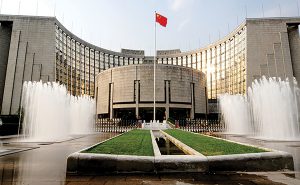Bloomberg
China should pursue any transition to green economic activity in an orderly manner and avoid any “campaign-style†carbon reductions at its financial institutions, a deputy central bank governor said.
Financial institutions must resist exit from high-carbon assets by enhancing their ability to identify green and low-carbon economic activities and coping with financial risks linked to climate change, the People’s Bank of China’s (PBOC) Xuan Changneng, said at the Bund Summit in Shanghai.
A rapid exit from high-carbon assets will increase risks during the transition, while an exit that is too slow would also raise risks, Xuan said via video link. Financial institutions, especially large ones, should take the lead in boosting their awareness and capability in carbon accounting and environmental information disclosure, he said.
The central bank will beef up financial regulation and conduct stress tests tied to climate risks, because a lack of regulatory constraints “could pose moral risks,†the deputy governor said.
China, which has been encouraging green lending for years, often touts itself as the biggest credit market in that industry in the world, with 20.9 trillion yuan ($3 trillion) in loans outstanding at the end of September. Some researchers have challenged that designation as comparable data on green loans isn’t always available in other countries.
China is the world’s largest polluter and has made an ambitious pledge to peak carbon emissions by 2030 and to be carbon neutral by 2060. Reaching those goals will mean leaning heavily on its banking system to back projects and businesses that will contribute to the transition from carbon-intensive practices.
Green and ESG-related lending has benefited Chinese banks. As of end-September, the amount of these types of loans grew 6.9% from the previous quarter, much faster than the 2.1% growth in overall lending, according to central bank data. Growth surged 41% year-on-year in the first nine months.
 The Gulf Time Newspaper One of the finest business newspapers in the UAE brought to you by our professional writers and editors.
The Gulf Time Newspaper One of the finest business newspapers in the UAE brought to you by our professional writers and editors.
